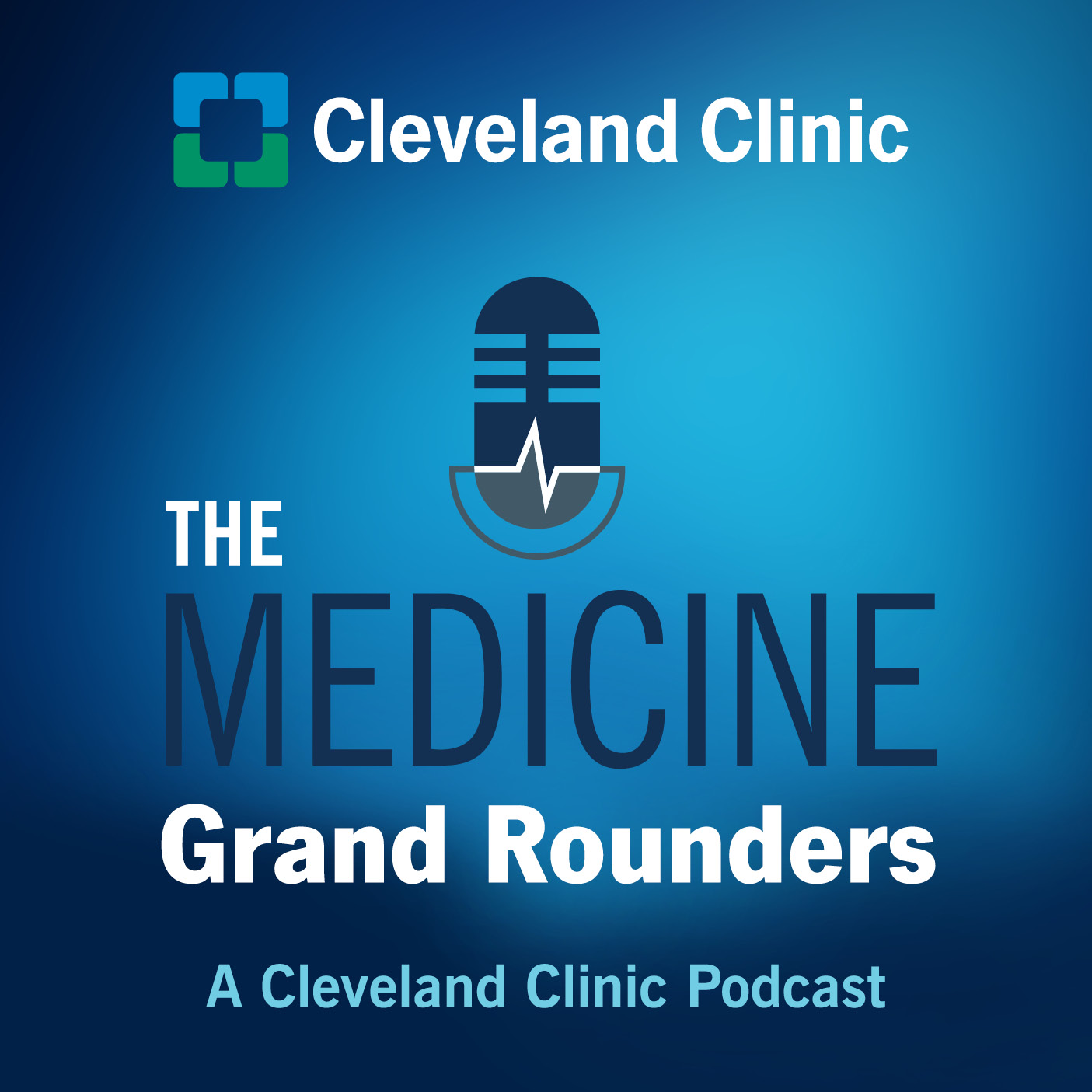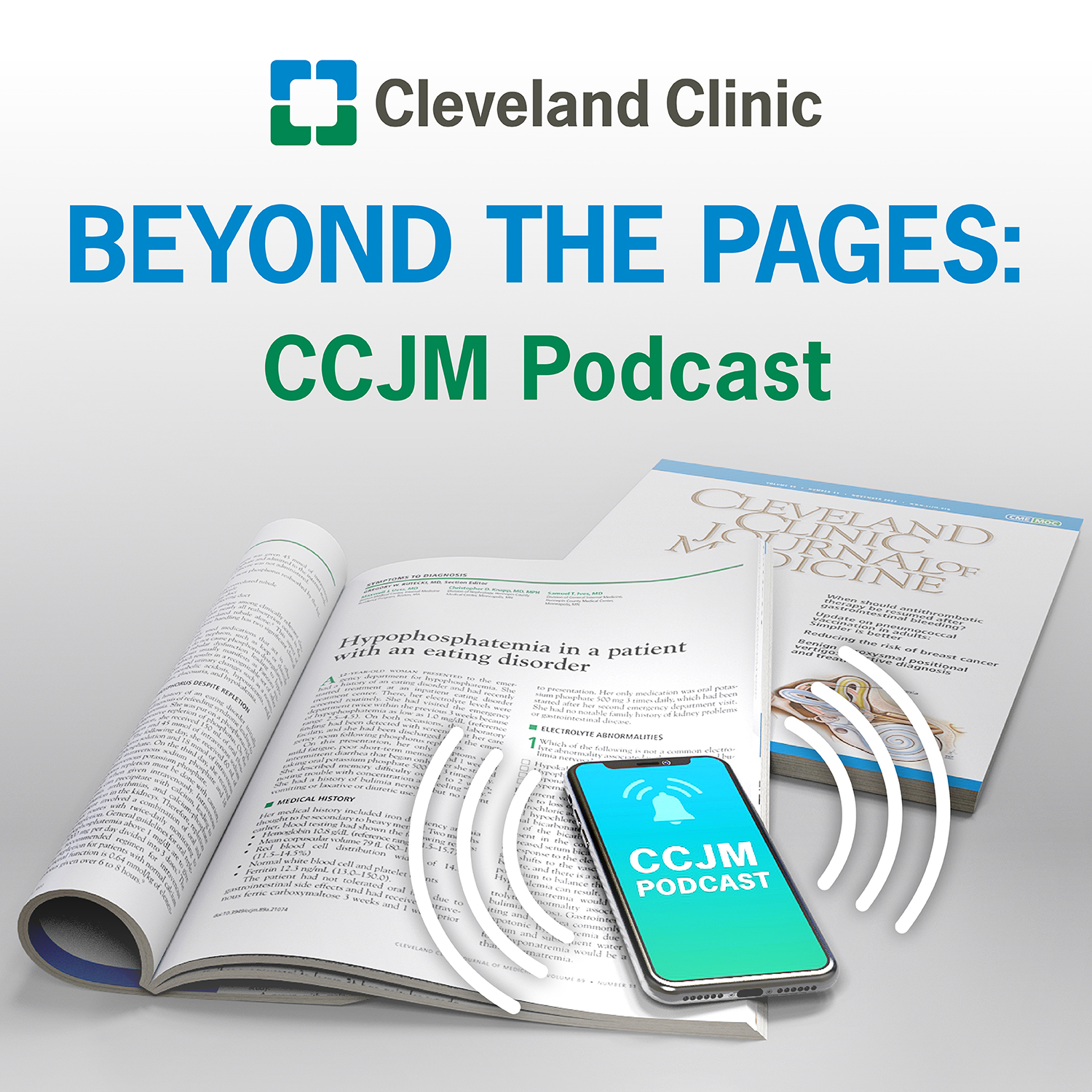What’s the Deal with Liver Enzymes With Dr. William Carey, MD

In this episode of the Medicine Grand Rounders, Dr. William Carey takes a deep dive into how to deal with elevated liver enzymes. Moderated by Ritika Mazumder, DO.
Subscribe: Apple Podcasts | Podcast Addict | Buzzsprout | Spotify
What’s the Deal with Liver Enzymes With Dr. William Carey, MD
Podcast Transcript
Dr. Wardrop: Let's delve into today’s topic commonly encountered in internal medicine: elevated liver enzymes. While they are frequently found in clinical practice, they can present a diagnostic challenge. Q1: Could you start by explaining what liver-associated enzymes are and why they are important?
-- Liver enzymes are proteins produced by hepatocytes that play a crucial role in various metabolic processes. The current battery of liver tests can roughly be divided into indicators of liver injury and indicators of liver injury.
-- Alanine aminotransferase (ALT), aspartate aminotransferase (AST), alkaline phosphatase (ALP), and gamma-glutamyl transferase (GGT) are markers of liver injury. These enzymes are released into the bloodstream when there's liver cell damage and from extrahepatic sites.
--AST is found in the liver, as well as in other organs like the heart and muscles. ALT is primarily found in the liver. Both enzymes are released into the bloodstream when liver cells are damaged, often indicative of liver injury, such as hepatitis or liver inflammation.
--ALP is found in the liver, bones, kidneys, and other tissues. GGT is primarily found in the liver and bile ducts. Elevated ALP and GGT levels are often seen in conditions affecting the bile ducts, such as obstruction or cholestasis. Consequently, bilirubin is often elevated as well.
-- It is important to differentiate these from markers of liver function like albumin, clotting factors, and bilirubin. Albumin and most clotting factors are synthesized in the liver. Bilirubin represents the liver’s conjugating and excreting function.
-- By assessing the pattern and severity of liver enzyme elevation, along with other clinical findings, we can determine the underlying cause of liver dysfunction and guide appropriate management.
Ritika: Q2: Could you explain the significance of differentiating between hepatocellular and cholestatic patterns of liver enzyme elevation?
Dr. Carey:
--Liver injury can be categorized as hepatocellular, cholestatic or mixed.
--Hepatocellular patterns typically involve elevated levels of ALT and AST out of proportion to ALP and Bilirubin. In contrast, cholestatic patterns involve elevated ALP and Bilirubin out of proportion to ALT and AST.
Ritika: That's very helpful to understand. Let's try to apply this knowledge with a practice case:
A 45-year-old woman with PMH of HTN, RA and T1DM presents to the clinic with complaints of fatigue, malaise, joint pain, and intermittent abdominal pain for the past few months. She mentions feeling increasingly unwell over the past several weeks. She typically consumes 1-2 drinks per day most days and has a BMI of 35.
Labs:
- ALT: 240 IU/L (normal range: 5-31 IU/L)
- AST: 180 IU/L (normal range: 13-39 IU/L)
- ALP: 190 IU/L (normal range: 30-120 IU/L)
- Total bilirubin: 3.0 mg/dL (normal range: 0.1-1.2 mg/dL)
- International normalized ratio (INR): 1.3 (normal range: 0.8-1.2)
Q3: How would you interpret the pattern of these values?
Dr. Carey:
--As we discussed, you primarily look at the levels of AST/ALT and ALP as a multiple of the upper limit of normal. This is a hepatocellular pattern of injury since the AST/ALT levels are elevated out of proportion to ALP. Note that the bilirubin plays no role in distinguishing these. AST: 4x ULN ALT: 8x ULN ALP: 1.6x ULN
--The R factor is a ratio of ALT to ALP elevation which was initially developed for DILI evaluation. It can help differentiate between hepatocellular and cholestatic patterns of liver injury. While the R ratio is not particularly better at this than eyeballing the liver enzymes, it can be helpful when the pattern is unclear.
Arjun: Q4: And what is the role of gamma-glutamyl transferase (GGT) in the evaluation of liver enzyme elevation?
Dr. Carey:
--GGT is an enzyme found in high concentrations in the liver and biliary tract. Its principal value lies in conferring liver-specific alkaline phosphatase.
Ritika: That makes a lot of sense. The R factor for this patient would be 7.7, which is in alignment with hepatocellular pattern of injury. Q4: What are some common differentials for hepatocellular versus cholestatic liver enzyme patterns?
Dr. Carey:
--For hepatocellular patterns, common differentials include hepatitis (both viral and autoimmune), alcoholic liver disease, non-alcoholic fatty liver disease (NAFLD), and acute liver ischemia. On the other hand, for cholestatic patterns, we often think of primary biliary cholangitis, primary sclerosing cholangitis, and bile duct obstruction. A mixed pattern of injury can be seen at times.
Arjun: Q5: How do you work up isolated ALP elevation?
Dr. Carey:
--Other sources of ALP: physiologic, bone, muscle, decreased clearance
--Isolated ALP elevation should be confirmed with repeat labs. If persistent, the next step is to determine if it is of hepatic origin. This can be confirmed with elevated GGT like we discussed earlier. Alternatively, ALP can be fractionated to determine source. If other liver enzymes or bilirubin are elevated, liver etiology is presumed, and confirmation is not necessary.
--If there is persistent isolated ALP elevation and hepatic origin if confirmed, chronic cholestasis or infiltrative disease should be considered. For example: partial bile duct obstruction, PBC, PSC, sarcoid, amyloid or rarely, metastatic disease to the liver.
Ritika: Thank you for outlining those differentials. Q6: Is the degree of liver enzyme elevation important?
Dr. Carey:
--AST:ALT ratio >2 of more is suggestive EtOH related injury.
--AST:ALT ratio >1000 is suggestive of infectious hepatitis including HSV and CMV, Tylenol toxicity, and ischemic liver injury.
--Isolated ALP elevation is usually transient and disappears on recheck. ALP levels > 4x the upper limit of normal are always concerning and should be worked up.
Dr. Wardrop: Q7: When are you concerned about acute liver failure?
Dr. Carey:
--Acute liver failure is defined by the presence of acute liver injury, coagulopathy (INR>1.5), and hepatic encephalopathy in the absence of preexisting liver disease.
Ritika: Q8: What initial workup and imaging would you recommend for elevated liver enzymes?
Dr. Carey:
--Hepatocellular: The workup typically involves assessing for viral hepatitis (with serologies and viral loads), screening for autoimmune hepatitis (with autoantibodies), evaluating for NAFLD (with imaging and possibly liver biopsy), and reviewing medications for potential hepatotoxicity.
Consider clinical context:
-EtOH use--> abstinence then recheck
-Metabolic risk factors--> Fib4 score
-Risk factors for hepatic viruses--> Check for HAV, HBV, and HCV
-Female with autoimmune history--> ANA, ASMA, IgG
-Increased ferritin and TSat-->HFE mutation
-Consider A1AT, ceruloplasmin, and TTG antibodies
--Cholestatic: In addition to assessing for primary biliary cholangitis and primary sclerosing cholangitis (with specific antibodies and imaging studies), it's important to consider imaging to evaluate for bile duct obstruction and to review medications for potential cholestatic effects.
Consider clinical context and acuity:
-Imaging for hepatic ductal dilation--> RUQ US vs CT --> if present, may need ERCP
-Concern for cholangitis--> Urgent ERCP
-Common drugs associated with cholestatic injury--> amoxicillin-clavulanate, ciprofloxacin, chlorpromazine, cimetidine, phenytoin, naproxen, captopril, erythromycin, and azithromycin.
-Intrahepatic ductal dilation may not be seen on initial imaging--> broad lab/imaging workup
Ritika: Q9: When do you refer to hepatology?
Dr. Carey:
--Refer to hepatology when there is unexplained AST/ALT elevation >2x the upper limit of normal. Liver biopsy may be needed.
--If transient unexplained elevation in liver enzymes, continue to monitor every 6 months and refer if persistent.
Arjun: Thank you again for joining us today. Q 10: Before we go, can you give the listeners especially those in training and those in primary care, some key summary take-home points from today’s episode?
Dr. Carey:
--The importance of a systematic approach to evaluating elevated liver enzymes, considering the pattern of enzyme elevation, and considering the differential diagnosis based on that pattern.
--Collaboration between internists and hepatologists for accurate diagnosis and appropriate management.
Ritika: Thank you, Dr. Carey, for sharing your expertise on this topic frequently encountered in our daily practice. Today's discussion has been enlightening, and I'm certain our listeners have also gained valuable insights.

The Medicine Grand Rounders
A Cleveland Clinic podcast for medical professionals exploring important and high impact clinical questions related to the practice of general medicine. You'll hear from world class clinical experts in a variety of specialties of Internal Medicine.
Meet the team: Dr. Andrei Brateanu, Dr. Nitu Kataria, Dr. Arjun Chatterjee, Dr. Zoha Majeed, Dr. Sharon Lee, Dr. Ridhima Kaul
Former members: Dr. Richard Wardrop, Dr. Tarek Souaid
Music credits: Dr. Frank Gomez

